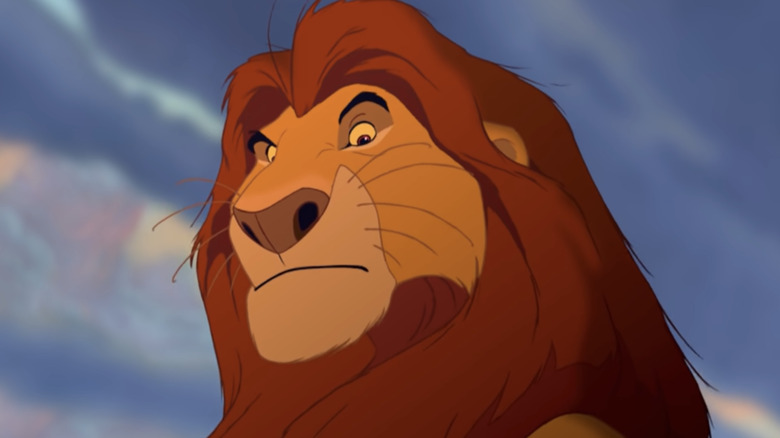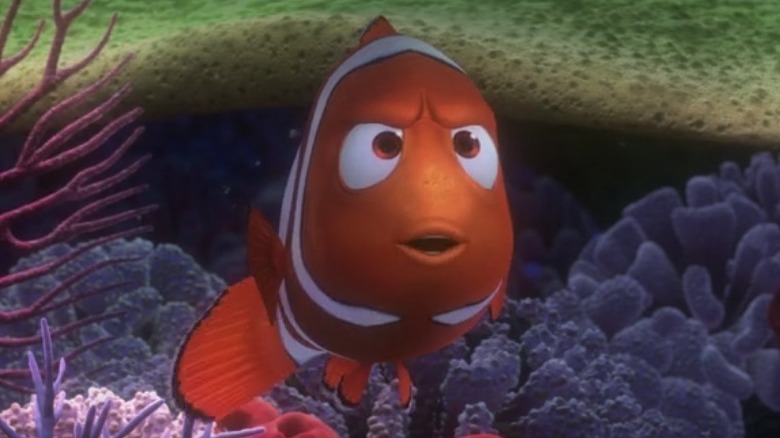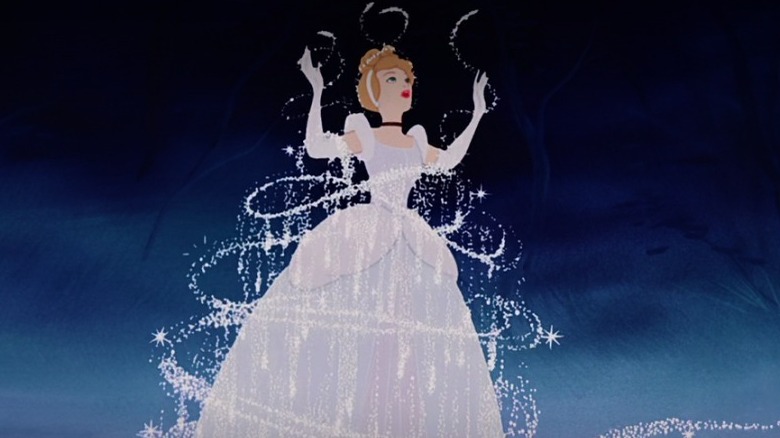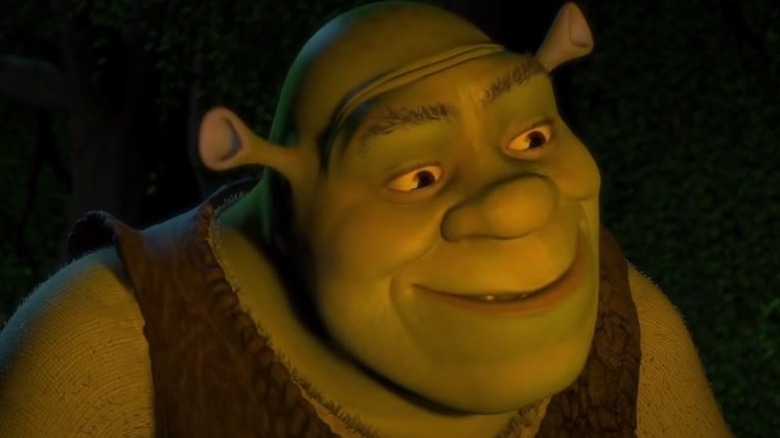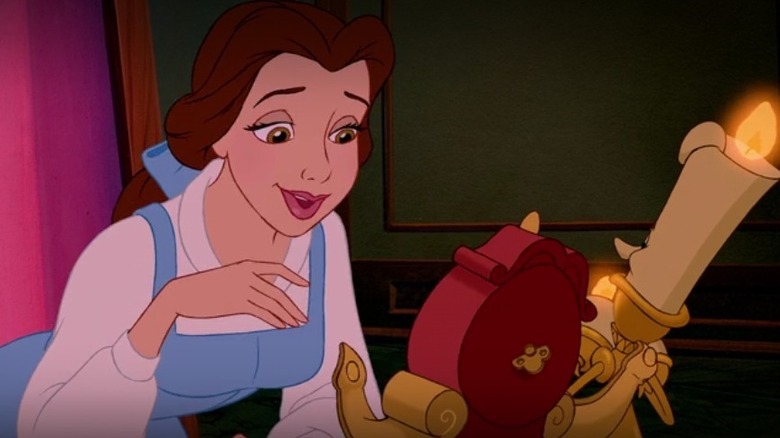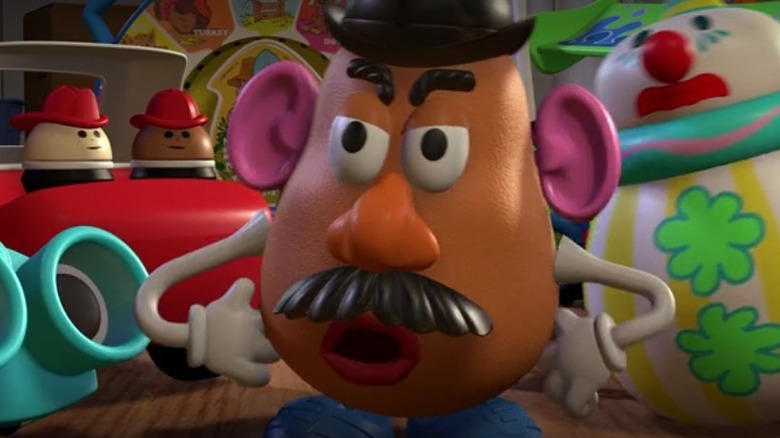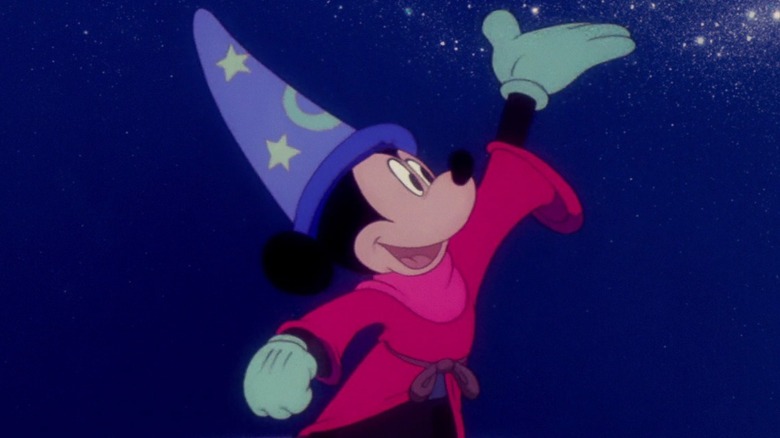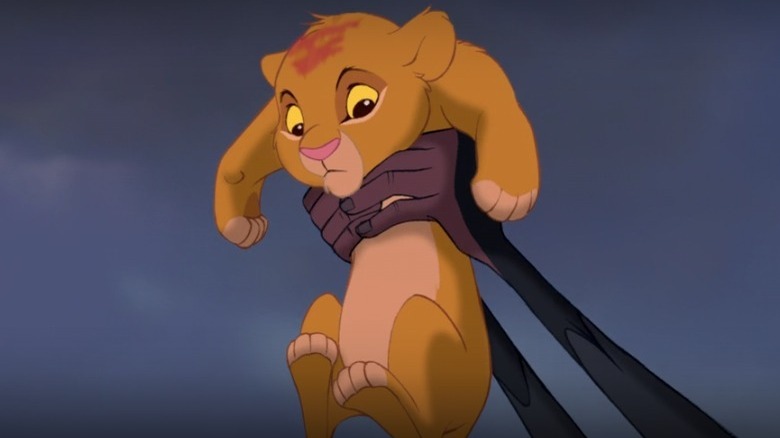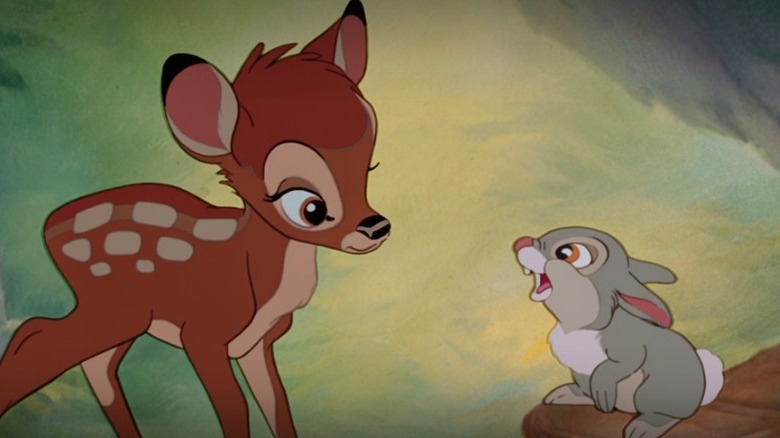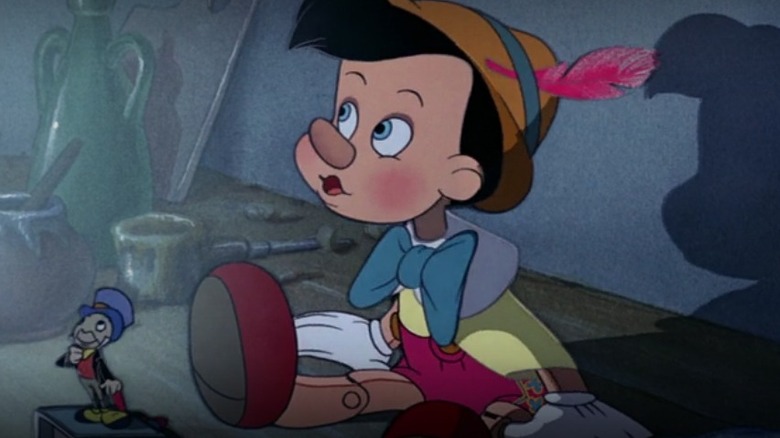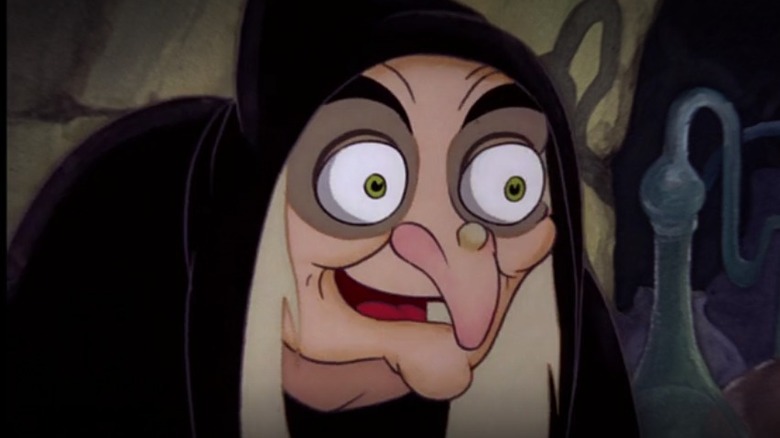Top 10 Animated Movies According To The AFI
Any fan of animation has a long, comprehensive list of their favorite movies. Let's face it: sometimes, there's a separate list of the "greatest" animated films, because when it comes to artistry, "great" and "enjoyable" don't always intermingle.
But when a movie hits on both fronts, that's when the magic happens. Such films dazzle the eyes and the imagination simultaneously. They make us not only laugh, cry and gain insight into the human condition, but they also give the same feeling we might have standing in a museum, gazing upon a timeless painting or sculpture. Animation, once a medium for children, sure has come a long way.
The American Film Institute also likes to list things. The nonprofit film preservation organization has made its own animated list, celebrating what it considers to be the best of the best. Below, a breakdown of the 10 films the AFI considers to be the best animated movies of all time; how many have you seen?
10. Finding Nemo (2003)
The tale of an overprotective father so determined to keep his only child safe that he ends up pushing him to rebel, Pixar's "Finding Nemo" is not only fully engaging for children of all ages, and frequently beautiful to look at, but also an insightful lesson in learning to let go, trust others, and know when it's time to let out a little leash.
Nearly two decades later, "Nemo" continues to be fondly remembered as one of Pixar's best. A huge part of that is undoubtedly Albert Brooks (as Marlin) and Ellen DeGeneres (as Dory), both so funny and warm. But this heartwarming tale, at times hilarious and occasionally suspenseful, is the full package. It portrays the ocean as both a scary and awe-inspiring place — which it is — and gives us a sense of what it would be like to live under the sea, with color and life and danger surrounding us at every moment. The best films put you in a different reality, taking you to places you'll never go in real life. "Finding Nemo" does precisely that — it just so happens to be animated.
9. Cinderella (1950)
As one might expect, many of the movies on this list come from Disney. Based on the sheer amount of features they've produced over the decades, it's obvious to see why. For generations, Disney existed as the gold standard when it came to feature-length animation, and it's hard to argue that isn't still the case today.
One element that has enabled such sustained success is the artistry, and "Cinderella" is a film built upon spectacle. From the fluid movements of its characters to the sparkling lights radiating from the Fairy Godmother's magic — even the castle where the ball is held — the viewer's eyes become captivated by the film's distinctive beauty.
On top of that, catchy songs like "Bibbidi-Bobbidi-Boo" and sweeping romantic pieces like "A Dream Is a Wish Your Heart Make" carry you away into this world of master artistry and wonder. The story is as simple as it gets, which is likely why it continues to be re-interpreted, but the overall experience of Disney's first foray into glass slippers ensures its status as a classic will continue to endure.
8. Shrek (2001)
More than 20 years after its initial release in 2001, it's easy to forget just how unique and revolutionary the original "Shrek" was. Looking back at the animated films which came before, most of them were about traditionally exceptional people, voiced by behind-the-scenes actors you could rarely name; animated films inspired by fairy tales told stories about royalty or individuals who were simply the best at what they did. "Shrek," on the other hand, decided to focus on the dregs of the fairy tale world — and bring in big stars to lend their voices and make it a marquee-worthy event.
Yes, the film is about saving a princess, but the heroes tasked with such a dangerous quest are not heroes at all. Shrek himself wants nothing more than to be left alone in his swamp. Donkey is a coward whose main talent seems to be annoying people until they become their best selves. These are not two people you would expect to swoop in and rescue a princess from a terrifying dragon.
The film goes on to subvert the tropes of fantasy by making the princess perfectly capable of taking care of herself, depicting a fairy tale kingdom via nonstop satire. In a lot of ways, this film signaled a fundamental shift in animation. Instead of stories with perfect characters living in a beautiful world, audiences suddenly saw more stories with flawed people surviving in a world closer to our own; also due to this film's success, traditional voice actors suddenly found themselves losing work to big names looking to replicate the Mike Myers/Eddie Murphy/Cameron Diaz dazzle of "Shrek."
7. Beauty and the Beast (1991)
After the release of "The Little Mermaid" in 1989, Disney's animation studio experienced a revitalization of legendary proportions. Suddenly, the House of Mouse was once again on top after decades of encroaching irrelevance, and once again began cranking out films beloved at the time, and still considered to be absolute classics today. As chronicled in the documentary "Waking Sleeping Beauty," the timeframe has been dubbed by fans as the Disney Renaissance. One of the brightest jewels in Disney's crown from these days is "Beauty and the Beast."
More than just talking furniture and a couple of songs, this is a film that took the wondrous spectacle of Disney's earliest efforts and modernized them with new technology and depth of characterization. "Beauty and the Beast" is heartbreakingly beautiful to look at. From the opening prologue detailing the curse of the vain prince, audiences are transported to a lush world equal parts light and shadow. Songs like "Belle" and "Beauty and the Beast" are not only impeccably crafted, but are paired with musical sequences that continue to enchant.
The film was so well made, in fact, that it became the first animated film to be nominated for best picture at the Academy Awards. While it didn't win, it did prove to audiences around the globe that animation was more than just "kid stuff," and comparable to any great work of art.
6. Toy Story (1995)
Before "Shrek" could become a change in attitude for animated films going forward, "Toy Story" had to be the seismic shift in animation that made such films possible. As the first entirely computer-generated animated feature film, it could've been the only one if it turned out to be an unmitigated disaster. But the core story of the film was strong enough that it stood its own with the innovation.
This is another classic whose impact, decades later, is easy to forget. While the concept of an entire film animated by computers seemed preposterous at the time, it's now the standard, having relegated traditional animation to the point of novelty. Putting it bluntly, "Toy Story" redefined what animation could be.
But all these years later, there's a reason why "Toy Story" hasn't become "Fantasmagorie" or "Gertie the Dinosaur," historical touchstones looked back on with mere detached, scholarly appreciation. Woody's fear of being overlooked by Andy for the flashier new toy Buzz Lightyear — and their eventual, unlikely friendship — still resonates with kids of all ages as the beloved franchise continues to soar, to infinity and beyond.
5. Fantasia (1940)
If nothing else, the idea behind "Fantasia" should have been enough to earn it a spot on a list like this. What happens when you listen to music? Do you engage with it, immerse yourself in the imagery it conjures in your imagination? That's what "Fantasia" is. A big, stunning look inside the brains of artists and musicians, there has never been a spectacle like this, before or since. These are the images living in their heads while engaged with the orchestra.
In a modern context, of course, the more-than-80-year-old film features some images that are problematic. But that shouldn't discourage modern audiences from discovering what is an otherwise almost perfect work of art.
In essence, "Fantasia" is a concert film — albeit, one with accompanying animated segments. Sometimes the animation is abstract and moody, other times it tells a narrative. The real standout is the epic, terrifying "Night on Bald Mountain," with an enormous winged demon summoning its armies, and "The Sorcerer's Apprentice," with Mickey Mouse causing all sorts of hilarious havoc with brooms and water. The reason these segments still hold up so well is that they are a perfect, precise pairing of music and visuals. They suit each other so perfectly, in fact, that you'll likely never again be able to think of one without the other.
4. The Lion King (1994)
As far as breathtaking opening sequences in film are concerned, there's Kubrick's dawn of man in "2001," the bank robbery in "The Dark Knight," the dance number on top of the cars in "La La Land," and right up there with them is the most memorable animated one: 1994's "The Lion King." If you aren't floored by the power of the sunrise, paired with "The Circle of Life," you might be watching it on too small a screen. "The Lion King" is pure epic filmmaking, on a scale that not even the 2019 remake was able to touch.
Despite the film's grandeur, the folks working on it at Disney were not considered to be the cream of the crop. Nevertheless, it has forged a lasting legacy, largely due to the iconic songs composed for the film by Elton John, as well as the glorious animation that accompanies it. However, where "The Lion King" really sticks its landing is the story.
In a lot of ways, this is an adaptation of "Hamlet." The conceit of a king being murdered by his brother in order to claim the throne, and his nephew returning to make him pay for his crime, is an influence here, as is "Kimba the White Lion." Another major influence that perhaps doesn't get mentioned as much is "Bambi"; at the end of the day, this is a retelling of a universal story about the pressures to live up to our full potential, and because of that it will always remain relevant.
3. Bambi (1942)
By now, everyone knows what happens to Bambi's mother — such tragedy has almost become a staple of the Disney brand, and the death is arguably one of the most impactful in the history of cinema, animated or otherwise. All these decades later, however, the greater tragedy might be in how the impact of that dark moment tends to overshadow the brilliance of this film. Which is strange, because it happens offscreen. If the suggestion of what hunters do to wild animals is too much for someone to stomach in a Disney film, they're missing the full, remarkable experience of rewatching it as an adult.
"Bambi" is an odd addition to the Disney canon, as it doesn't really have a plot. Nor is there much of a villain, other than mankind itself. Bambi doesn't aspire to be anything great or have a quest; he's simply born and grows up. That's it. This isn't a classic Disney musical, filled with delightful songs and entertaining musical numbers; this is an art film about the cycle of the natural world.
Structurally, the film is like a template for "The Lion King." A new royal is born, one of their parents dies, there's a time-jump, he falls in love with a girl from his childhood and becomes a father. It also resembles Richard Linklater's classic "Boyhood" in that nothing really happens — except the beauty of life itself. Still, this animation is so staggeringly beautiful that you'll sit riveted all the way through, until the final moment of an adult Bambi looking over his family brings you to the verge of joyous tears.
2. Pinocchio (1940)
"Pinocchio" is where the idea of what a Disney film is began to take shape. "Snow White and the Seven Dwarfs" broke down the door for feature-length animated movies, sure, but Pinocchio perfected the medium with an engrossing story about a boy struggling to live the life they deserve.
That desire to be a "real boy" leads Pinocchio to some pretty dark places. All these years later, they remain surreal and scary, a statement on dreaming without a plan and following the path of destiny. The world may be filled with dangerous people, but a person's conscience can steer one clear of such trouble. Of course, Pinocchio, like most people, doesn't understand all that until much later.
The animation is brilliant, moody, evocative and full of energy. The imagery of Jiminy Cricket alone, with his formal wear and umbrella, blazed a trail for every breakout Disney sidekick to come. Of course, the song "When You Wish Upon a Star" not only became quintessential Disney, but essentially the company's national anthem — forever reminding people that they can be more than what they are.
1. Snow White and The Seven Dwarfs (1937)
In the late '30s, as America clawed itself out of the Great Depression and was on the verge of encountering the events that would lead to WWII, there was a brief respite of happiness. At this time came a first glimpse of what the future of animation was going to be, and it was incredible.
While animation had existed decades prior, this was the first time the art form had been used to tell one narrative story for the entire runtime of a feature film. Of course, that narrative was broken up into segments that almost feel like standalone shorts, but it still worked as a whole. Like "Cinderella", this retelling of a classic fairy tale was simple, straightforward storytelling. A vain woman ventured to kill the most beautiful woman in the world in order to preserve her vanity. But this story serves as a foundation to support astonishing visuals — and to that extent, it excels masterfully.
While scenes of Snow White singing in nature and the seven dwarfs going about their day remain impressive today, the scenes of darkness and fear also hold up surprisingly well. The transformation sequence, where the queen makes herself hideous to fool Snow White, remains unnerving in both its artistry and the concept of how far this woman was willing to go. "Snow White" deserves to be at the forefront of this list for many reasons — but perhaps most significantly because without it, the other nine films above never would have happened.
